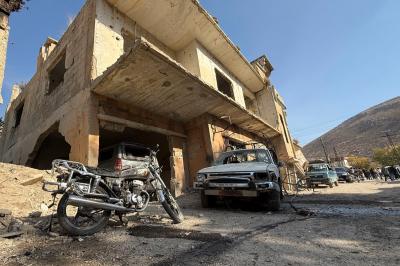Who came up with the idea of granting a new president, government, or manager a 100-day grace period before assessment and accountability begin?
Over the past two weeks, we’ve heard the government praising itself, following a similar wave of self-congratulation surrounding the president’s “achievements.” One may agree or disagree with these evaluations — some may applaud, others may criticize — but one thing is clear: both the president and the government are still in the stage of incomplete attempts. While the intention and effort are present, the outcomes remain far below expectations.
Nevertheless, commentators have begun framing what has been achieved so far as a "success" of the 100-day experience. Yet, the concept itself is being misunderstood and misapplied.
The “100-day” benchmark originated with U.S. President Franklin Delano Roosevelt. When he took office in March 1933, at the height of the Great Depression, he launched into action with remarkable speed and urgency. He called Congress into a special session and pushed through dozens of laws to rescue the economy. In those first 100 days, Roosevelt signed 99 executive orders and pushed 15 major legislative acts, setting a precedent for efficient and serious governance. The term "100 days" comes from a radio address Roosevelt gave in July 1933, where he spoke of “the crowded events of those hundred days.”
We’re not here to compare, but…
Lebanon is facing numerous, entrenched, and interlinked crises. Solving them begins with the return of state authority — with a government that exercises full control over all Lebanese territories, secures the borders, enforces the law, implements reforms, and lifts the economy out of its deep collapse.
Today, Lebanon suffers from an Israeli occupation of part of its land — a consequence of a "support war" that neither aided Gaza nor deterred Israel. The country also endures a suffocating economic and financial crisis that has paralyzed the state and impoverished its people. Corruption runs deep, laws are applied unequally, and the burden of Syrian and non-Syrian refugees has grown unsustainable.
What have the executive and legislative branches of government accomplished in these 100 days?
On the Israeli occupation? Nothing. It remains unresolved, tied to clear conditions the Lebanese state has yet to meet, while "Hezbollah" continues to “talk in circles,” avoiding decisive action.
On illegal weapons? Nothing, except south of the Litani River. Elsewhere, arms remain out of control.
On reforming state institutions? Very little — if anything.
On appointments? Partial steps. Some were made through the official mechanism, others bypassed it entirely. Street demonstrations, disguised as social protests over inflation, might be launched soon to pressure for a share in the appointments.
On economic and social policy? Nothing. Despite the “armies” of advisers, things continue to deteriorate.
And the list goes on.
Lebanon’s crisis, no doubt, does not match the magnitude of the Great Depression that devastated the United States and much of the world in the early 20th century. But that crisis found solutions under a president who began working on day one — and who, by day 100, had tangible achievements to show.
Please post your comments on:
comment@alsafanews.com
 Politics
Politics














